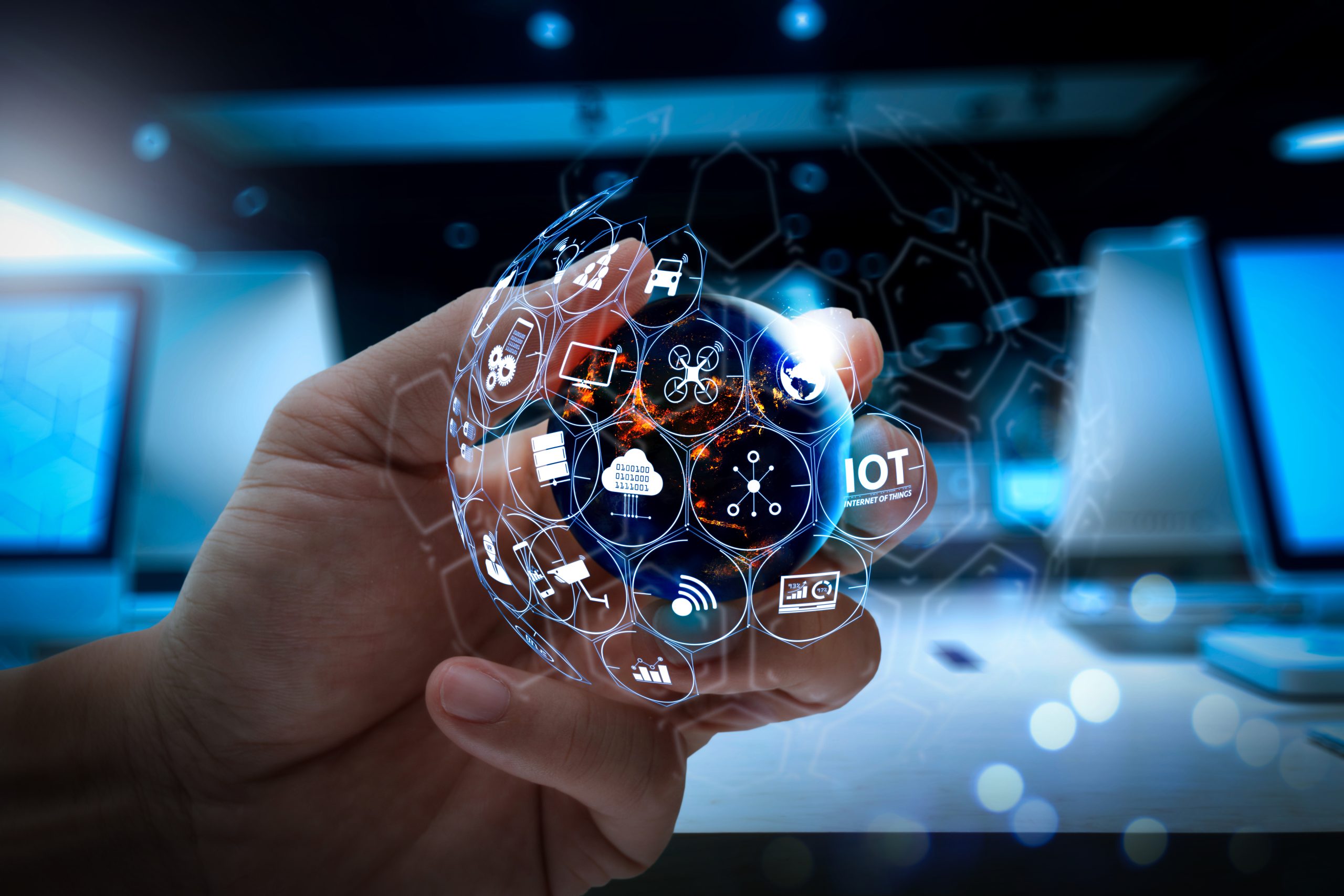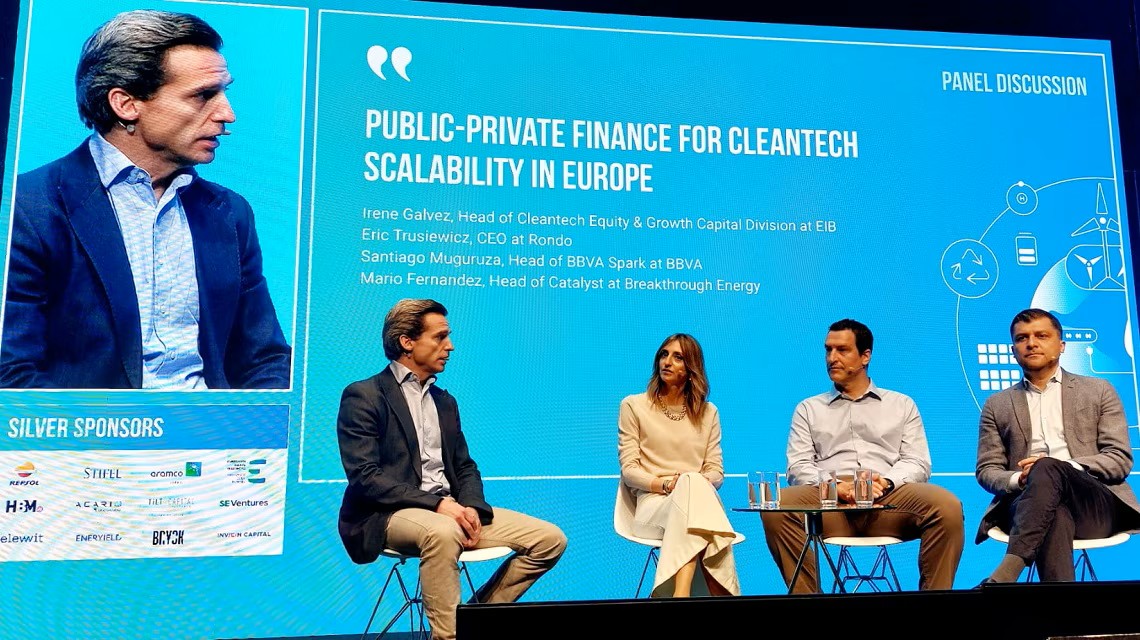What happened to IoT (Internet of things)? An in-depth analysis of its impact on connected companies
Industrial, energy and agricultural companies are already seeing the benefits of connected devices, cCombined with other technologies and within the framework of a clear strategy, the Internet of things (IoT) improves day-to-day business thanks to solutions from specialised startups.
The working day begins. Professionals arriving at work in private vehicles can park easily thanks to automatic information on available parking spaces. After receiving the approval of a biometric recognition system, they enter the building, which monitors their security and adjusts the lighting and air conditioning settings. This hypothetical scenario is an everyday reality for some companies thanks to the Internet of things (IoT).
The potential of this technology, which facilitates the connection between devices for the exchange of information, has been talked about for a long time: Gartner rated it as a high-impact trend as early as 2011. Why has it been making fewer headlines recently and how is it being integrated into companies since the acronym became popular? “In 2015, it made waves because it was a newly emerging market. Investment grew a lot after that and it is now a more established technology than other less used, but more talked about technologies,” explains Jorge Trincado , CEO of Thinger.io , an open source platform used to develop IoT projects.

Although many companies have progressively joined this trend since it came to the fore, there is still room for its incorporation at corporate level. IoT has not been deployed as quickly as expected so far, according to the consulting firm McKinsey. In Spain, only 22.8% of companies with 10 or more employees and 11.3% of remaining companies have these devices. In Trincado’s opinion, its high cost and the need to develop tests to prove its potential slowed down its incorporation, but the hardware market “has grown and reduced prices” and current projects “are well-considered and easily replicable”.
As a result, the deployment of IoT will continue to grow in the coming years. McKinsey estimates that it generated a value of $1.6 trillion globally in 2020 (about €1.5 trillion) and will reach between $5.5 trillion and $12.6 trillion (€5.2 trillion and €12 trillion) by 2030. Following the recent InnovaHome Festival, organised by BBVA Open Innovation, on this technology, we connected with specialised entrepreneurs to learn about the benefits it brings to companies that have adopted it and the best practices to follow so that others can start using it too.
Factories, the biggest beneficiaries of IoT
Having sensors, wearables or smartphones is only the first step. “IoT is one piece within a technology ecosystem. The important thing is not producing data, but what you do with it: data analytics and artificial intelligence go hand in hand,” says Trincado. Additionally, the degree of implementation and the specific uses of these combined technologies differ from sector to sector.
- Industry. 26% of the value of IoT in 2030 will be generated in factories, the biggest beneficiaries according to McKinsey. Benefits include process automation, improved efficiency and predictive machine maintenance. The devices also increase operator safety, as shown by Prysmex. Their software creates “a 3D model of the plant similar to a digital twin (the virtual replica of a system) to analyse risks in real time and prevent accidents,” says Susana Ruiz , its co-founder.
- Health. Connected glucose metres and cardiac monitors, wearables to monitor physical activity, etc. There are many connected solutions in healthcare. Cuideo, which offers a telecare device for the elderly, or HumanITCare a platform for remote monitoring of patients with chronic diseases, are some of the startups that use them.
- Energy. Optimising processes and saving costs are the main advantages of using technologies such as those offered by Myadtech. Combining own hardware and a cloud platform, they “turn water, electricity and gas metres into smart metres to help take readings remotely, review overdue invoices, reduce delays in payment and energy waste, and offer a better customer experience,” according to CEO, Marco Andrade at the InnovaHome Festival.
- Agriculture. Some startups in agrotech, one of the technological trends of 2022 according to BBVA Open Innovation, use sensors to monitor crops, avoid wasting water and fertiliser, and streamline the work of farmers. Among them are Kilimo, Aqualytics and Libelium.
- Logistics and mobility. Connected devices facilitate product traceability throughout the logistics chain. Moreover, IoT improves management of vehicle fleets, as achieved by the startup Pulpo, which forms part of the BBVA Open Innovation ecosystem, and contributes to driver safety, as in the case of the motorist protection offered by LiveLink.
- Banking. Point-of-sale terminals show that banks were pioneers in IoT. In recent years, they have adapted to the latest connected devices: BBVA’s app is now available for Apple Watch and for samsung smartwatches.
Transforming the products they market into connected devices can serve another purpose for many companies: predicting user desires. “Coffee makers, microwaves or refrigerators will obtain anonymised information about when and how we use them, or what devices are around, and marketing will anticipate what we need,” Trincado predicts. Guaranteeing the privacy of personal information is fundamental in this scenario: the Spanish Data Protection Agency warns of the importance of companies identifying and managing the risks of personal data processing.
Smarter (and more sustainable) offices
Professionals can also benefit from IoT adoption in the workplace. “Traditional offices can become ‘smart offices’ to support collaboration between teams, generate more flexible spaces and take care of the environment,” adds Marcos Andrade, of Myadtech. In fact, 42.1% of Spanish companies use smart metres, lamps and thermostats that contribute to energy efficiency.
Some companies offer integrated solutions for this environment, such as Metrikus, which monitors space occupancy and capacity, air quality and energy consumption in offices. Telefónica, for its part, has created a platform to create intelligent spaces combining several systems.

Roadmap for embedding IoT
To prevent loT projects from failing companies should take note of a few recommendations before getting to work.
- Start when the operation is clear. “Technology works when the company has well-defined, well-considered and structured processes,” advises the Prysmex co-founder.
- Define a strategy in which IoT is the means, not the end. Andrade says: “You need to identify a problem where you want to maximise the benefit and align the IoT product to it.”
- Collaborate with third parties. The CEO of Thinger.io. recommends “seeking expert advice to help identify the right hardware for each use case and the feasibility and profitability of the project”.
- Be aware of the challenges. The aforementioned information privacy, cybersecurity (43% of companies do not fully protect their IoT infrastructure) and interoperability (connected devices still do not easily communicate with each other) are still challenges to be taken into account.
The Internet of things has shown that, far from being a technology of the past decade, it is having a real impact on companies and has a promising future ahead. The deployment of 5G, which favours faster connection speeds, and even combination with the metaverse, will open up new opportunities to make the most of connected devices. Although their silent work often goes unnoticed and no longer makes headlines, they are and will be increasingly present, linking every corner of companies.



